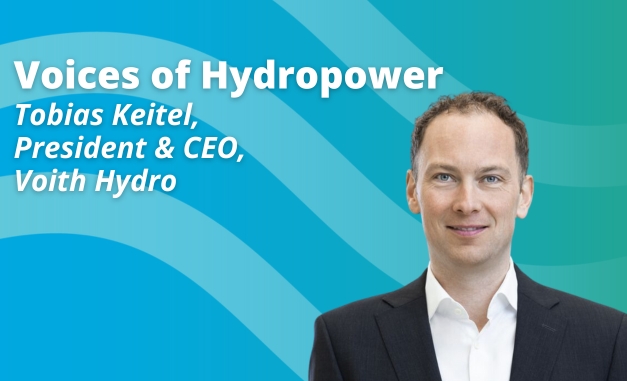Voices of Hydropower: Lynn St-Laurent
In the “Voices of Hydro” series, hydropower industry leaders provide insights on opportunities and challenges within the sector and the measures their organisations are taking to advance sustainability. These stories shed light on the people who keep our lights on, supply affordable energy and protect communities from floods and droughts.
Lynn St-Laurent, Senior Communications Advisor of Hydro-Québec spoke with us about, amongst other things, the efforts by Hydro-Québec to make their use of energy more efficient and their collaboration with the indigenous Cree communities on the gold-certified Eastmain-1 Development.
What are some of the key challenges facing hydropower in Canada?
One of the key challenges facing the hydropower sector in Canada is the race for clean electricity.
To decarbonise our economy throughout the country, we need to undertake various actions in order to expand our renewable energy capacity. Electrifying our cars, homes and other existing buildings requires lots of new clean power. Additionally, small and large green industries want to connect to locations like Québec where there is access to that clean energy. From large-scale battery makers to hydrogen producers, the demand for a new green economy is on the rise in Canada. This strong demand for clean energy from industries shows we’re moving in the right direction – away from fossil fuels. But it does make the need for more clean megawatts even greater, increasing electrification and powering industry.
At Hydro-Québec, we need to add between 150 and 200 TWh of new clean energy by 2050 in order to meet decarbonisation objectives. That is certainly the main challenge, and this is not exclusive to Québec as we see this around the world. Despite the work ahead of us, this is a formidable opportunity as we have already identified paths to decarbonise and meet the challenge of climate change. It is a positive sign that companies want to find locations where they have access to clean energy; the remaining question, however, is the way we do it.
Currently, in Québec, we are looking at a variety of measures. One of our most significant efforts will be energy efficiency. This will be the biggest, but also invisible powerhouse we will be building. We have already saved close to 10 TWh through energy efficiency measures, and are on a path to increasing this number.
We are privileged to have a hefty backbone of hydropower in the province, with 37,000 MW on our system. That has us in a position where we can potentially triple wind power in Québec. And thanks to hydropower’s flexibility and the storage provided by our reservoirs, all that great wind power will be backed up by another renewable resource – hydro. We are also looking at refurbishing existing facilities which will increase our capacity thanks to new turbines.
How can we ensure hydropower is sustainable through community partnerships?
Hydro-Québec is a true believer in best ESG practices and a supporter of the Hydropower Sustainability Standard. We were more than happy to be assessed, which resulted in the Eastmain-1 Development achieving a gold certification, the first in the world.
One of the Hydropower Sustainability Standard’s main objectives is to see hydropower developments deliver net benefits to local communities. The Standard’s more than 300 criteria extend far beyond social and environmental aspects. The certification process brings people of diverse professions and backgrounds together.
Eastmain’s gold certification is both a tribute to the many experts such as engineers, anthropologists, and biologists, who worked on the project at the time and certainly a tribute to how the Cree communities collaborated with us on the project which is located in a vast Indigenous territory called Eeyou Istchee, known locally as ‘the People’s Land’. Rigorous studies were done to foresee Eastmain-1’s ecological impacts and measures were subsequently planned to limit the effect of those impacts, ensuring environmental preservation is at the core of the project’s development. These measures were designed to limit and mitigate the 1,248 MW facility’s impact on how the nine Cree communities and other inhabitants use the territory.
The collaboration with the Cree has ensured their expectations and concerns have been considered since the earliest stages of the development process. Assessors met with representatives of the Cree-Hydro-Québec monitoring committee, which was established in 2007, and saw firsthand the various mitigation measures implemented at Eastmain-1. Among the measures seen by auditors and observers were weirs, low dams built across the Rupert River that maintain the water level from different stretches. This helps protect the habitat and spawning grounds, allowing the Cree to continue to navigate and fish. Preserving the Cree communities’ way of life and natural surroundings was a key component in the project’s design.
As seen with Eastmain-1, sustainability tools and standards must be credible and inspire confidence. The energy transition will be successful if we work with local communities. We are thrilled to see various places around the world from Tajikistan to Brazil also have their projects certified and hope that other members of the IHA and hydropower community follow suit. IHA plays a crucial role in helping facilitate shared expertise among communities, businesses and governments to help coordinate our response to the ongoing climate crisis.
See Hydro-Québec's film on Eastmain-1 here
Watch Lynn's interview here










